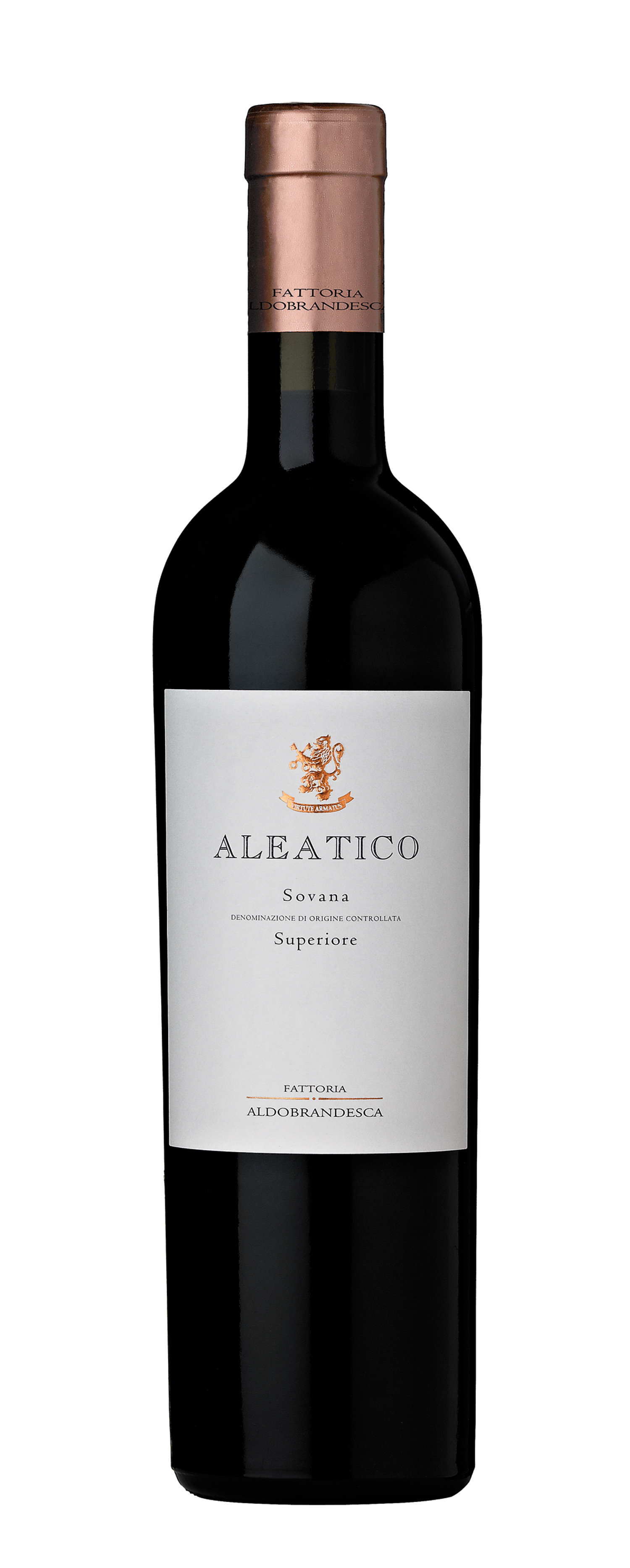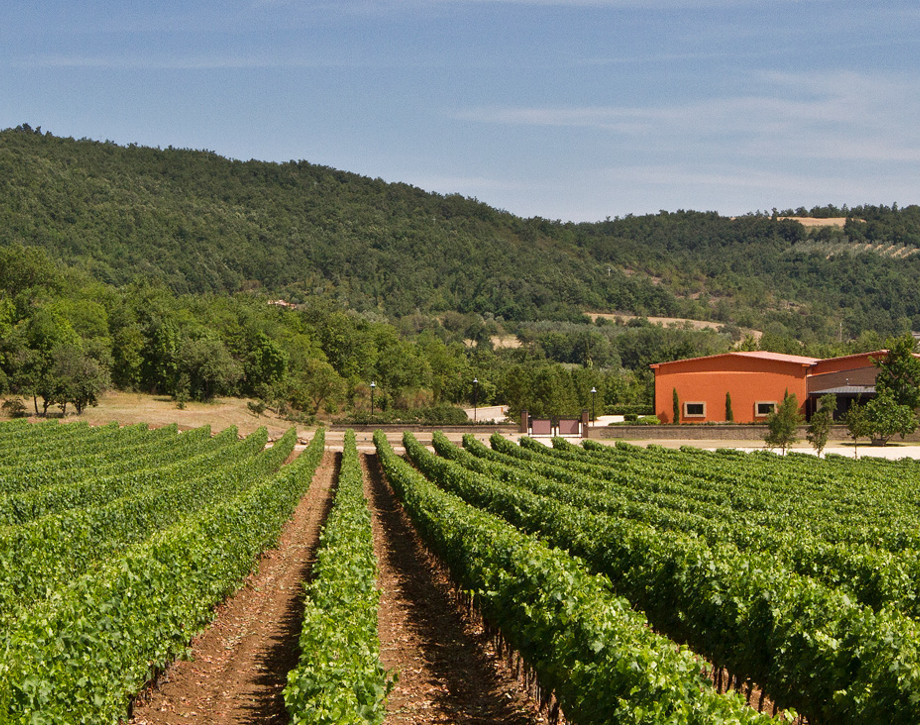Aleatico

Climate
The growing season was characterized by a cool climate. The mild temperatures of spring and early summer contributed to a delay in bud burst, which only began in late April. The lack of peak temperatures during the summer led to a slow and gradual ripening and much fragrance in the grapes.
Vinification
The harvested grapes were divided into two parts. One was fermented immediately, the other was placed in a dry and well ventilated space where it remained for a month in order to dry and gain in both aromatic and structural concentration. The transformation into wine, in both cases, followed the same procedures. After a very delicate pressing, the must remained on its skins for approximately a week to extract the typical color, the complex aromatic patrimony, and the intense and balanced structure. The wine was then run off its skins and fermented at temperatures maintained constantly below 68° Fahrenheit (20° centigrade). The fermentation was halted once the residual sugars reached the desired level by means of a sudden chilling of the wine. The wine was then held at low temperatures before bottling.
Historical data
The Aldobrandesca farm is situated near the historic hamlet of Sovana in southern Tuscany. The first vintage to be produced was the 1997. This wine is distinguished by its personality, its drinking pleasure, and by the typical aromatic richness of its nose and palate.
Tasting notes
Ruby red in color, the nose shows the typical notes of roses which characterize Aleatico along with aromas of plums and strawberries. Sweet and velvety on the palate, Its finish and aftertaste are typically varietal as well.

The Wine
Aleatico, a very old grape variety and also the name of a traditional Tuscan sweet dessert wine, develops a unique varietal expression in this area that stands out for its strong identity and a soft, balanced palate. Part of the harvest is vinified immediately while the other part is left to air dry to concentrate aromas. The result is a pleasant expression of freshness and structure while preserving the richness of the variety’s typical floral and spicy aromas.

Climate
The growing season was characterized by a cool climate. The mild temperatures of spring and early summer contributed to a delay in bud burst, which only began in late April. The lack of peak temperatures during the summer led to a slow and gradual ripening and much fragrance in the grapes.
Vinification
The harvested grapes were divided into two parts. One was fermented immediately, the other was placed in a dry and well ventilated space where it remained for a month in order to dry and gain in both aromatic and structural concentration. The transformation into wine, in both cases, followed the same procedures. After a very delicate pressing, the must remained on its skins for approximately a week to extract the typical color, the complex aromatic patrimony, and the intense and balanced structure. The wine was then run off its skins and fermented at temperatures maintained constantly below 68° Fahrenheit (20° centigrade). The fermentation was halted once the residual sugars reached the desired level by means of a sudden chilling of the wine. The wine was then held at low temperatures before bottling.
Historical data
The Aldobrandesca farm is situated near the historic hamlet of Sovana in southern Tuscany. The first vintage to be produced was the 1997. This wine is distinguished by its personality, its drinking pleasure, and by the typical aromatic richness of its nose and palate.
Tasting notes
Ruby red in color, the nose shows the typical notes of roses which characterize Aleatico along with aromas of plums and strawberries. Sweet and velvety on the palate, Its finish and aftertaste are typically varietal as well.

Fattoria Aldobrandesca
The Fattoria Aldobrandesca estate is located in the southern part of Tuscan Maremma, in the center of what is known as “the Etruscan Tuff zone”. Maremma is often associated with its coastline, flat lands, pine tree forests, horses and local cowboys called “butteri”. The Fattoria Aldobrandesca estate is in rural Maremma located inland in an area known as the Tuff Area. Ancient civilizations built fascinating medieval fortresses and settlements on steep tuff bluffs that today are open-air museums. Small characteristic towns carved out of tuff stone in this area are Pitigliano, Sorano and Sovana. The vineyards rise on the slopes of a spur of tuff where the hilltop town of Sovana is located, surrounded by a beautiful landscape of incredible natural beauty, rich in architectural heritage.

Soil
Open terrain, volcanic in origin with tufaceous subsoils.


















